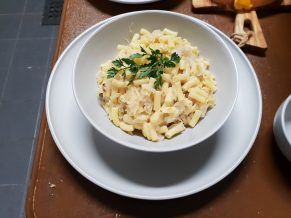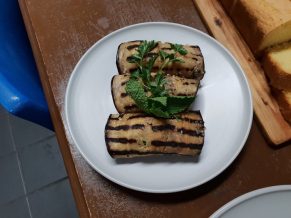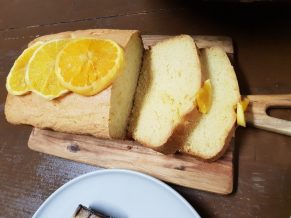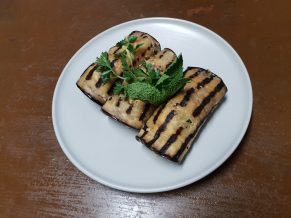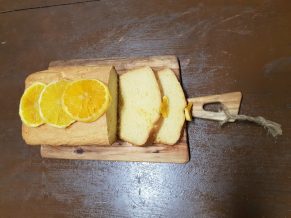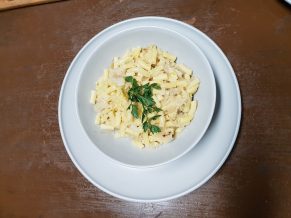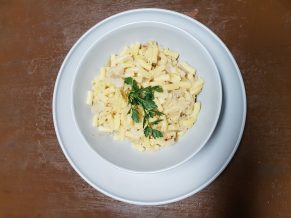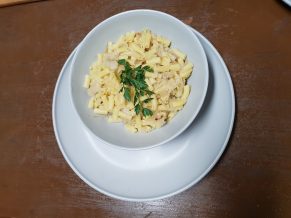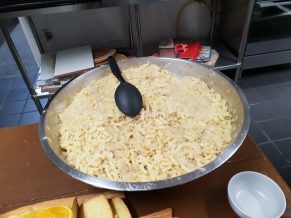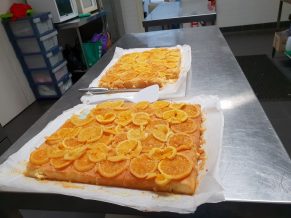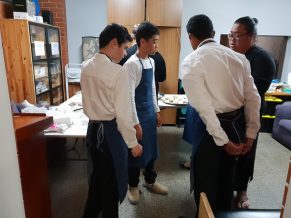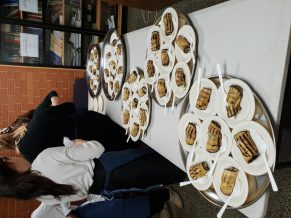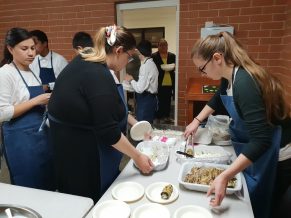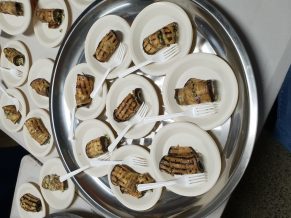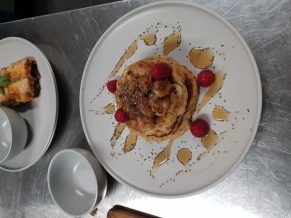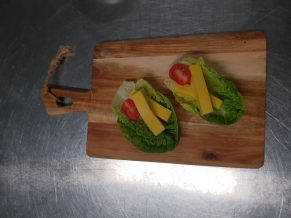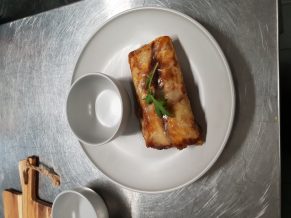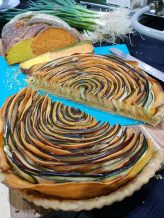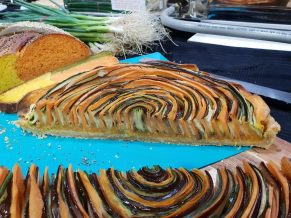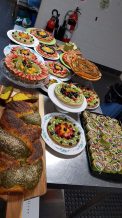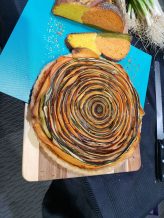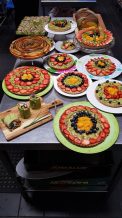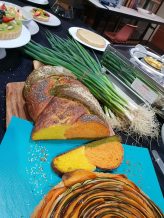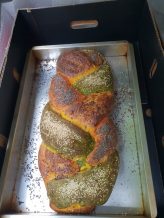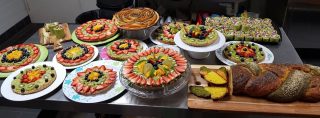Schofields Cooking Demo
8, 15, 22 October 2018
How quickly the time came for the Schofields Church to once again hold another series of Vegetarian Cooking Classes. These took place on three consecutive Monday evenings during October.
It was nice to see once again many familiar faces present and was awesome to meet new ones too. They all enjoyed listening to the health talks that were presented by Domenic and Danica. The attendees were then eager to see-how and to sample-taste each of the dishes demonstrated by Rosetta, Amy, Vivian, Tanya and myself. As always, a great ‘thank you’ to those who gave presentations and all those who helped in various ways.
The first health lecture in this series was taken by Domenic, entitled “A vegetarian lifestyle”. He spoke about the benefits of vegetarianism, which has been very topical in the news of late. The World Health Organization made a statement declaring that red meat has high chances of causing cancer, especially Colorectal cancer. Processed meat is directly linked with the risk in developing colorectal cancer and associated with stomach cancer. A large amount of red meat strongly links with pancreatic and prostate cancer. Domenic also shared some myths and facts of Vegetarianism. He talked about unhealthy and healthy vegetarians. Just because one is a vegetarian does not mean that they are healthy, it all depends what the body is fed.
Here is the link for Domenic’s lecture and the demonstrations on the first evening of October’s program: https://www.youtube.com/watch?v=gtZykjyTQO4&feature=share
Danica had the second health segment and her topic was “The secret ingredient to good health and longevity.”
When we are born, we inherit the gut bacteria from our mothers. Whatever problems the mother has may be passed down to the next generation–a birthright for life. Over the years we continue to influence the balance of intestinal bacteria by the things which we eat and other lifestyle habits.
Our gut health depends on what we feed our bodies. What is put inside will determine what kind of health we will have. Just like preparing the soil before we plant a good garden, if we fertilize the soil, we will be sure to have a good crop. The same is true with our bodies—if we feed the body the right things, we will reap the benefits.
Certain foods feed certain bacteria. What we eat determines what types of bacteria will proliferate. Therefore, it is best to avoid processed and refined foods and feed the body with a simple and wholesome plant-based diet. To feed your friendly bacteria well, include in the daily diet at least one type of legume and have a high amount of fibre.
For further information this lecture can be watched on: https://www.youtube.com/watch?v=f4PquACjEfY
Our last topic was also taken by Danica, “Eat the colours of the Rainbow.”
We started with red foods. Foods that are red contain a powerful antioxidant called lycopene. Some examples of these are red apples, cherries, red grapefruit, tomatoes and watermelon. There have been lots of studies done on this range of food and the findings are exciting. Red foods have positive effects on the following: eye health, Alzheimer’s disease, epileptic seizures, all things related to heart health, including blood pressure, heart attacks, arteriosclerosis. For bone health, they have been found to slow down bone cell death. Lycopene-containing foods have also been found to help with fungal infections.
Orange and yellow foods contain beta carotene. Examples of these include, pumpkin, sweet potatoes, carrots and oranges. The body converts beta carotene to vitamin A, which is also another antioxidant. Antioxidants are important in the prevention of disease and slowing down the aging process.
Beta carotene has been found to be very important in pregnancy and breastfeeding, as it plays a vital role in the development of the child. It helps protect the skin from the sun. It is also very important in eye health and keeping your respiratory system in good shape.
Green foods contain chlorophyll. Chlorophyll is very important in the prevention of cancer. It cleanses the liver. Chlorophyll slows the growth rate of harmful bacteria and has been found to be useful with weight loss management. Chlorophyll also contains magnesium as a key part of its structure. There is a long list of things magnesium is vital for such as insomnia, hyperactivity, sugar metabolism and anxiety.
The last colours we talked about in our rainbow were the blues and purples. These are a pretty class of foods. They include, blueberries, plums, grapes, and purple sweet potatoes. This class of foods contain anthocyanin, yet another powerful antioxidant!
In a huge study done on nurses it was found that those who ate blueberries at least once a week had much fewer cases of heart disease, hypertension and/or heart attack than those who didn’t eat these anthocyanin-containing berries. It was also seen in other studies to help protect against diabetes. These powerful foods were also seen to improve cognitive performance. Eye health also improved with these pretty foods.
Every time we are tempted to just fill our plates with some white pasta, white rice or white potatoes, stop! Remember all the beautiful colours that God has made for us to eat and their long list of health benefits. Train your taste buds to enjoy them. Soon you will be craving them and reaping their many to your health.
Unfortunately, we do not have a link for this presentation.
During the three nights, the preparation of the following foods were demonstrated:
- Eggplant and Cauliflower Rolls
- Sauerkraut and Cabbage Pasta
- Orange Semolina Cake
- Orange Coconut Ice cream
- Chickpea Tofu
- Black Bean Enchiladas
- Caramelized Banana & Chia Pancakes
- Peanut Butter Ice Cream
- Veggie Wraps
- Vegetable Pasta with rice Noodles
- Raspberry Coconut Balls
- Lemon Pineapple and Fruit Open Pie
A big hit was the “Peanut Butter Ice Cream”. With Summer just around the corner, we thought you may enjoy making this scrumptious and very easy recipe:
Peanut Butter Ice Cream
INGREDIENTS
- 2½ cups unsweetened almond milk
- 1¼ cups pitted Medjool dates
- ½ cup natural peanut butter
- ¾ cup raw cashew butter*
- 2 teaspoons pure vanilla extract
- ¾ teaspoon fine-grain sea salt
METHOD
Have on hand an air-tight container to place the ice cream into when ready. Makes approximately 1½ litres.
In a high-speed blender, combine the almond milk, dates, peanut butter, cashew butter, vanilla, and sea salt. Blend on high for about 3 minutes (depending on your blender) or until completely smooth.
Pour the ice cream mixture into the air-tight container and place in the freezer. Freeze until it sets. Its best to leave it for at least 6-8 hours.
Prior to serving, it is also best to take the ice cream out of the freezer for to soften. Leave it at room temperature for 10-15 minutes, depending on the weather.
Stores in freezer for up to 1 week.
Notes
* To make your own cashew butter: blend 3 cups raw cashews in a food processor until smooth (it will be very thick) stopping to scrape down the sides as needed. If the cashew butter is still too chunky then add 1 tablespoon of water to encourage blending into a creamy cashew butter. Keep refrigerated.
Until the next time! May God impress upon our minds to be more considerate and kinder to our bodies so that we can present it as a healthy place for the indwelling of the Holy Spirit.
~ Lidia Voncina
